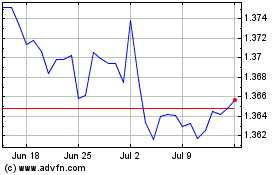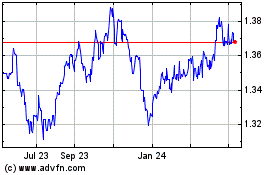Germany's Q4 GDP Expands On Exports
February 23 2018 - 2:23AM
RTTF2
Germany's economy expanded at a solid pace, as initially
estimated, in the fourth quarter largely driven by foreign demand,
detailed data from Destatis showed Friday.
Another official data showed that the largest euro area economy
logged its biggest budget surplus in 2017 since the reunification
in 1990.
Gross domestic product climbed 0.6 percent sequentially, but
slightly slower than the 0.7 percent expansion seen in the third
quarter. The rate came in line with the estimate published on
February 14.
On a yearly basis, the calendar-adjusted GDP advanced at a
faster pace of 2.9 percent annually, after rising 2.7 percent.
Similarly, price-adjusted GDP grew 2.3 percent versus 2.2
percent a quarter ago. Both annual growth rates matched flash
estimate.
The expenditure-side breakdown showed that positive
contributions to growth came mainly from foreign demand.
After rising 1.8 percent, exports increased substantially by 2.7
percent, contributing markedly to economic growth in the fourth
quarter of 2017. Imports were up 2 percent in the same period.
As regards domestic demand, there were mixed signals. While the
household final consumption expenditure remained stable, the
government final consumption expenditure grew 0.5 percent.
Gross fixed capital formation in machinery and equipment gained
0.7 percent. However, gross fixed capital formation in construction
declined 0.4 percent.
For the whole year of 2017, GDP advanced 2.2 percent compared to
1.9 percent in 2016.
Destatis reported that net lending of general government totaled
EUR 36.6 billion in 2017. In absolute terms, this was the highest
surplus achieved by general government since German
reunification.
The surplus ratio of general government was +1.1 percent.
US Dollar vs CAD (FX:USDCAD)
Forex Chart
From Mar 2024 to Apr 2024

US Dollar vs CAD (FX:USDCAD)
Forex Chart
From Apr 2023 to Apr 2024
